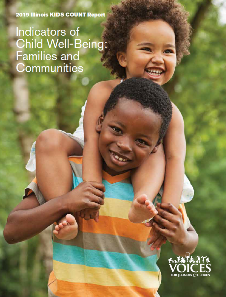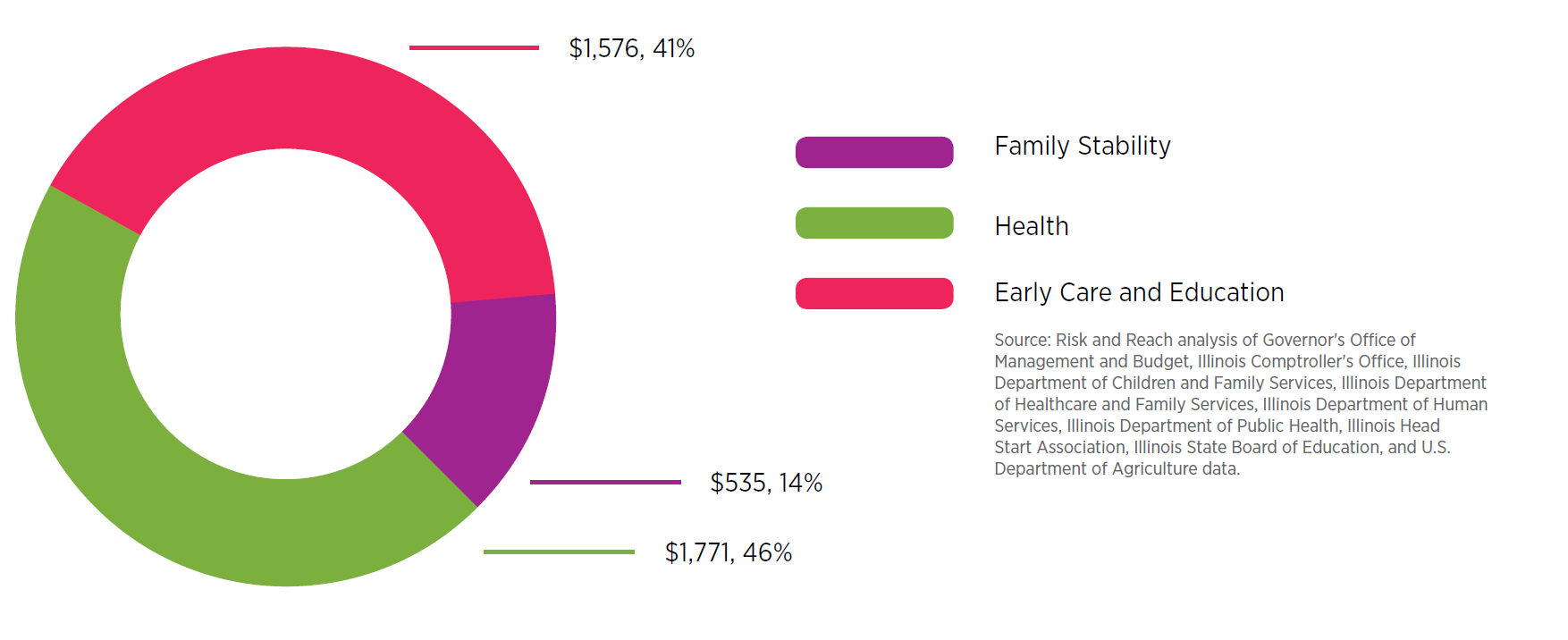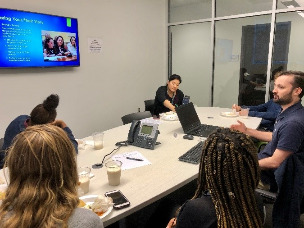| | Voices for Illinois Children Newsletter
From Voices President Tasha Green Cruzat October 14, 2019 | | | | When you were a child, did you have a paint-by-numbers set? They are still around. Within each kit, there is a set of containers with different paint colors and an image on a board marked with different numbers. Each number correlates to a specific paint color to use in the marked region. When you are done, a full picture comes into view – rich in color, texture, and detail. We deal in numbers at Voices. They could be numbers from the U.S. Census Bureau, the Illinois Department of Public Health, or the state budget. When we put them together, they help paint a picture of the circumstances Illinois children face. Depending on the set of data, which might more closely examine conditions faced by Latinx or African-American children, the pictures can be very different. Looking at those pictures (based on the facts and not assumptions) helps document disparities that exist and steps we need to take to ensure every Illinois child is on the path to a healthy and productive life. Below, you’ll read about some of our most recent efforts to examine data. Our evidence-based advocacy efforts at Voices emanate from the data and the pictures they depict. Our efforts also depend on you joining us to provide an even stronger Voice on behalf of Illinois children. | | | | | | 2019 Illinois KIDS COUNT Report  Voices recently released its 2019 Illinois KIDS COUNT Report, which looks at the well-being of Illinois children regarding socioeconomics, education, health and safety, and housing. Where possible, we broke down the data by race, ethnicity, and county. The results illustrate some sharp differences. Among the findings: - The poverty rate for African-American children is more than three times higher than that of white children (38% vs. 10%).
- Nine percent of African-American sixth graders in Illinois public and charter schools met or exceeded math expectations versus 17% of Latinx children and 37% of white children.
- Black infants are significantly more likely to be born to mothers who received either late prenatal care or no prenatal care at all.
The report also contains some compelling essays by Illinois youth and an Illinois mother. One high school student from East St. Louis writes about the violence in her community. _________________________________________________________________ Going to funerals and candlelight vigils are a part of our routine. Creating posters and signing get well cards has become a normal task. And although it never ceases to shock us that a friend of ours or even a neighbor was gunned down due to violence, it also never ceases to hurt us. It has simply just become a part of our lives to accept that this is how things are. High School Sophomore, East St. Louis _________________________________________________________________ Along with the report, you can also find county data sheets on our website. Please contact Voices if you would like us to provide a briefing in your community. | | | | | | Data Snapshot on Concentrated Poverty Our KIDS COUNT Project Manager, Dr. Bill Byrnes, recently wrote a blog post that takes a closer look at a new data snapshot from the Annie E. Casey Foundation (Casey) on concentrated poverty and other poverty-related census data. Concentrated poverty represents those census tracts with overall poverty rates of 30% or more. Compared to the general poverty data, the number of Illinois children in concentrated poverty shows an even greater gap.  Source: KIDS COUNT Data Center, Children Living in High Poverty Areas by Race and Ethnicity in Illinois Dr. Byrnes notes one reason for the gap has to do with the level of financial resources families have depending on their racial/ethnic background.  As the Casey policy paper on concentrated poverty notes, “High-poverty neighborhoods generally don’t provide access to healthy food and quality public schools or medical care, and they often subject residents to greater exposure to environmental hazards, such as poor air quality or lead”. | | | | | | Fiscal Scan in Risk and Reach Report I wrote to you previously about the Risk and Reach Report. The report, which is an endeavor of a number of early childhood advocacy groups and funders, looks at various risk factors impacting young children (birth to five) in Illinois and the government programs serving them. Voices for Illinois Children, along with the Erikson Institute and the Illinois Early Childhood Asset Map, helped compile and analyze the information contained in the report. In particular, Voices reviewed recent state budget data regarding expenditures on the detailed government programs. You can now review a separate report on the fiscal scan online. The report looks at several years of budget data and the breakout between state general funds, other state funds, and federal funds. Resources for Families with Young Children by Domain of Child Well-Being, FY2018 (in millions)  | | | | | | Youth Leadership Program  As I noted above, Voices uses the data detailed here and elsewhere in our advocacy work. However, we don’t just want adults to speak up on the needs of Illinois children and families. We want young people to do so as well. With support from the Allstate Foundation, Voices has embarked on a Youth Leadership Program in the Chicago neighborhoods of North Lawndale and Humboldt Park. Part of this entails conducting focus groups and advocacy training with high school and college-age students. Voices policy analyst John Gordon has provided advocacy training to more than 40 students in the last month from North Lawndale and Humboldt Park. We plan on concluding this year’s program with a community forum where young people will be able to use their training to relay their concerns to elected officials about their communities and advocate for needed changes. | | | | | | Donate to Voices Conducting our KIDS COUNT, fiscal analysis, and advocacy work takes time, staff, and resources. Please help support Voices by making a contribution today. You can do so at our website. Your donation will help us continue our important work to improve the lives of all children regardless of where they live or their race or ethnicity. | | | | | | Voices for Illinois Children
125 S. Clark Street
Chicago, Illinois 60603
312-456-0600
[email protected] | | | | If you did not subscribe, or no longer wish to receive email updates, unsubscribe here. | | | | | | | |